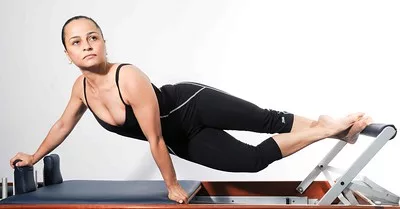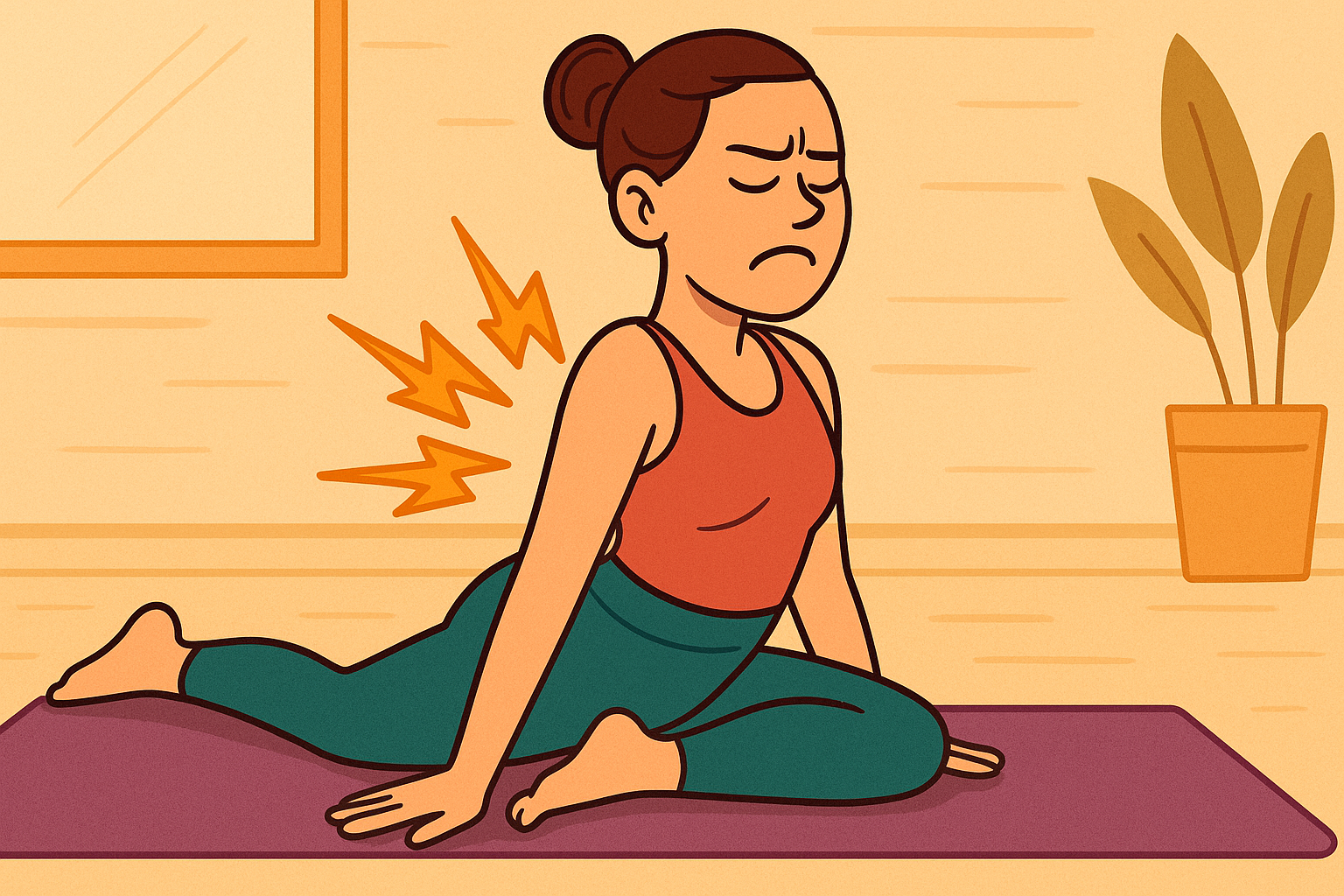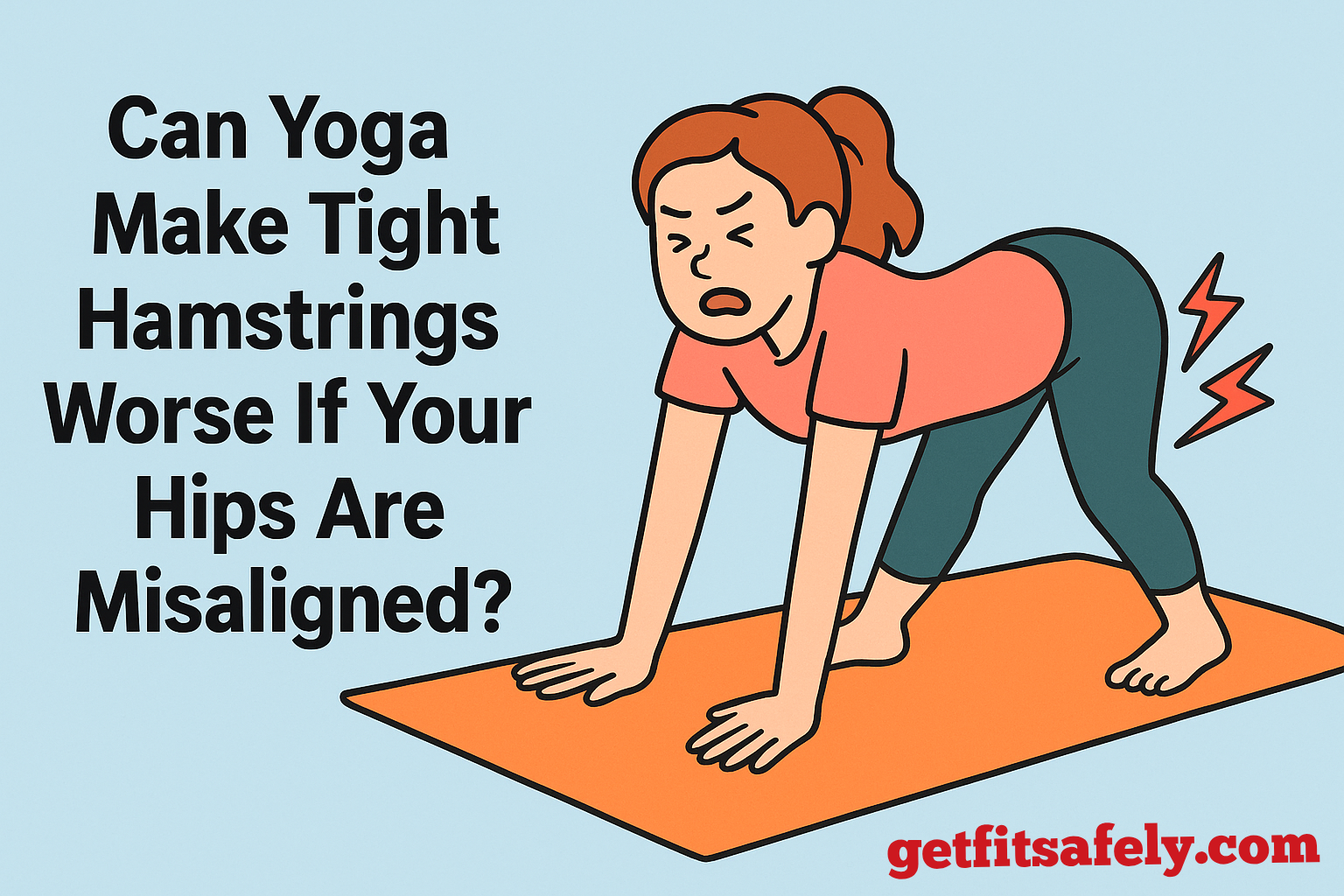Why does Pilates make my inner thighs cramp like crazy mid-set?
The first time it happened to me, I swear, I thought my leg was trying to go on strike and detach from the rest of my body.
I was there, calm, in full “zen breathing” mode on a reformer, feeling elegant and centered, when suddenly… BAM.
My inner thigh tightened up all at once, like it was auditioning for a role in a medieval movie where the main character is tortured on the wheel.
You know that split second when you’re deciding whether to power through with stoicism or drop to the floor like you’ve just been shot with an arrow in the leg?
Yeah, that moment.
And surprise—it’s not just a matter of weakness or poor hydration.
There’s a much more interesting explanation behind this… intense sensation.
The real culprits: the adductors
The muscles on the inside of your thighs are called adductors.
Their main job is to pull your legs toward the centerline of your body, stabilize your pelvis, and quietly work alongside other muscles during everyday movements.
The problem is, in daily life we rarely use them in a targeted and sustained way.
In Pilates, however, you often find yourself in positions where your adductors have to activate and stay contracted for several seconds or even minutes, while other leg muscles are already working hard.
It’s like asking the shyest coworker in the office to suddenly give a speech in front of 200 people: technically they can do it, but the initial panic is guaranteed.
Why the cramp hits mid-set instead of after
Many people think cramps only happen “at the finish line” when the muscle is already exhausted.
In reality, in Pilates, the adductors often work in a lengthened but active position.
That’s a lethal combination—the muscle is stretched and, at the same time, has to contract to keep control of the movement.
From a neuromuscular standpoint, it’s a bit like asking your brain to do two opposite things at once: stay relaxed and tense at the same time.
The result? The nervous system, not used to this challenge, sends a confused signal and the muscle locks up in that sudden vise grip you know all too well.
It’s not just a flexibility issue
The common thought is, “If I cramp, I must be too stiff.”
The truth? It’s not just about elasticity—it’s mostly about muscle endurance.
Adductors are used to short bursts of effort and quick contractions, not staying active for long periods with constant tension.
Pilates, on the other hand, is the king of slow, controlled contractions: an exercise might seem harmless, but after 15–20 seconds of “micro-movements,” the muscle starts sending protest signals.
It’s like holding a light grocery bag: at first, no problem, but after a few minutes your forearm shakes like you’re carrying a refrigerator.
How to reduce or avoid cramps in class
Here are some strategies that actually work:
- Targeted warm-up – Before starting tough exercises, try short squeezes with a soft ball between your knees.
- Extra training outside Pilates – Moves like band adduction, side-lying leg lifts, or the classic pillow squeeze can build endurance.
- Stretch after strengthening – Gentle butterfly or straddle stretches keep the muscle supple.
- Breathe – Holding your breath increases overall tension and makes things worse.
Sometimes even slightly changing your foot angle on the reformer or mat can lower the cramp risk and let you keep going.
The hidden upside nobody talks about
Here’s the funny thing—if you get adductor cramps during Pilates, it’s probably because you’re finally training them properly.
Most workouts ignore these muscles, leaving them lazy and unresponsive.
Pilates, on the other hand, puts them under the spotlight and says: “Hey, it’s your turn to do the hard work.”
It’s uncomfortable, yes.
But after a few weeks of adaptation, you’ll notice improvements not just in class: better pelvic stability, more controlled squats, and even smoother running form.
It’s like finding out the quiet friend in the group is actually a guitar genius—they just needed the chance to show it.
Working with “neighbor” muscles for prevention
One of the most common mistakes is thinking that to avoid adductor cramps, you just need to train… the adductors.
In reality, the body works in muscle chains: every group is connected, and if one is weak, another has to pick up the slack.
When the gluteus medius and minimus (the hip’s lateral stabilizers) aren’t strong enough, the adductors end up doing extra work.
Result? They tire much faster, especially in Pilates control movements.
Adding exercises like monster walks with a band, lateral steps, or side lunges helps spread the workload across different areas of the leg, lowering the risk of early inner-thigh burnout.
It’s like having a work team where everyone pitches in instead of one person always doing overtime—less stress, more efficiency, better results.
Micro-pause strategy in class
If the cramp hits mid-exercise, you don’t always need to quit completely and sit massaging your leg.
You can insert 2–3 second pauses where you slightly ease the pressure, shake out your leg to loosen tension, and then resume the movement with more control.
This “stop & go” technique lets the muscle recover micro-bursts of energy without leaving the exercise entirely, avoiding that harsh on/off switch that often makes the cramp feel worse.
It’s especially useful in the first weeks of adaptation, when your adductors aren’t used to holding long contractions.
Pro tip: if you’re on the reformer or magic circle, use these micro-pauses to reset your breathing, since holding your breath under effort can make the muscle even stiffer and speed up fatigue.
Training muscle “release” too
A common mistake is thinking that to avoid cramps, you just need to strengthen the muscle.
In reality, a muscle that lives in constant baseline tension is like a spring that’s always compressed—one unexpected move, and it snaps.
That’s why, beyond static stretching, it can help to learn active release techniques.
Methods like PNF (contract–relax stretching) train the muscle to contract and then let go in a controlled way.
Foam rolling along the inner thigh at the right pressure can also break up adhesions and improve local circulation.
Even a simple manual massage—done by a pro or with a massage ball—stimulates proprioception and reduces the stiffness that encourages sudden cramps.
Training release doesn’t mean “softening” the muscle until it’s weak—it’s about teaching it to switch from contraction to rest without getting stuck halfway.
It’s like learning to brake smoothly instead of slamming the brakes—less mechanical stress, more movement control.
Engaging the core to reduce leg overload
In many Pilates moves, if your core isn’t active, your legs end up doing more work than they should.
When the transverse abdominis, obliques, and pelvic floor aren’t engaged, the adductors have to take on extra pelvic stabilization duty, which quickly leads to fatigue and, in the worst cases, cramping.
Engaging your core creates a natural belt that keeps your pelvis steady so your legs can focus on the actual movement without having to “save your balance” every rep.
A good sign your core is truly active? During the exercise, your abs feel compact and stable without holding your breath or tensing up completely.
Practical example: in bridges with a ball between your knees, if you activate your core before pushing, you’ll notice your inner thighs still burn, but they don’t hit “crazy cramp” territory as quickly.
It’s like splitting a load between two people instead of having one lift it all—less isolated strain, more overall endurance.
What if I’m already sore?
It happens all the time—you got cramps last week in class, spent two days with that annoying “pulling” feeling in your inner thigh… and now you’ve got Pilates again.
The temptation to skip is strong, but it’s not always necessary.
If the discomfort is just delayed onset muscle soreness (classic DOMS), you can still work out—just dial down the intensity. Avoid extreme wide-leg positions and use lighter resistance.
Pro tip: start your session with a couple of light activation moves for the adductors, like small squeezes on a ball between your knees, just to “wake up” the muscle without overloading it.
If you feel sharp or pinpoint pain, though, it’s better to take a break, do some gentle stretching, and give the muscle a couple of days to recover.
Should I train my inner thighs with machines, bands, etc.?
Short answer: yes, but smartly.
Gym machines like the adductor machine (the one where you open and close your legs while seated) can be useful for strengthening these muscles in a safe, isolated way, especially if you’re a beginner or have always neglected them.
Bands and loops, on the other hand, let you do more dynamic, controlled work—similar to Pilates—but with easily adjustable resistance.
The key is not to go overboard with max loads: the inner thigh is more of a “postural” muscle than a “power” muscle, and it responds better to moderate loads held over time rather than explosive, super-heavy efforts.
A good approach is alternating:
- 1–2 targeted strengthening sessions per week (machine or band)
- Functional work in Pilates
- Post-workout stretching to maintain mobility
Pilates moves that really fry your inner thighs
Not all Pilates moves stress the inner thigh the same way.
Here are the ones that, in my experience and biomechanics, really put them under the microscope:
- Side-lying inner thigh lift – Lying on your side, lifting the lower leg. Feels easy until you hit 15 slow reps.
- Bridge with ball between knees – Combined glute and adductor work with constant squeeze.
- Frog on the reformer – Knees bent in a frog shape, pushing and pulling against resistance: inner thigh cries silently.
- Leg circles in supine with legs together – Control keeps constant tension on the adductors.
- Standing splits on the reformer – Controlled opening against resistance is a “classic” for making your inner thighs beg for mercy.
If you’re a beginner, it’s better to reduce the range of motion and resistance so the muscle adapts gradually without jumping straight to “dramatic live cramp” phase.
Final Thoughts
The next time your inner thigh locks up mid-exercise, don’t think you’ve failed.
See it instead as a sign that you’re strengthening a muscle group that will give you huge benefits in posture, stability, and even sports performance.
Train them consistently, don’t quit at the first discomfort, and soon you’ll go from “Help, cramp!” to “Okay, it’s burning but I can control it.”
And the day you have to do a perfect lunge, hold a yoga pose, or sprint without wobbling… you’ll know exactly who to thank.




